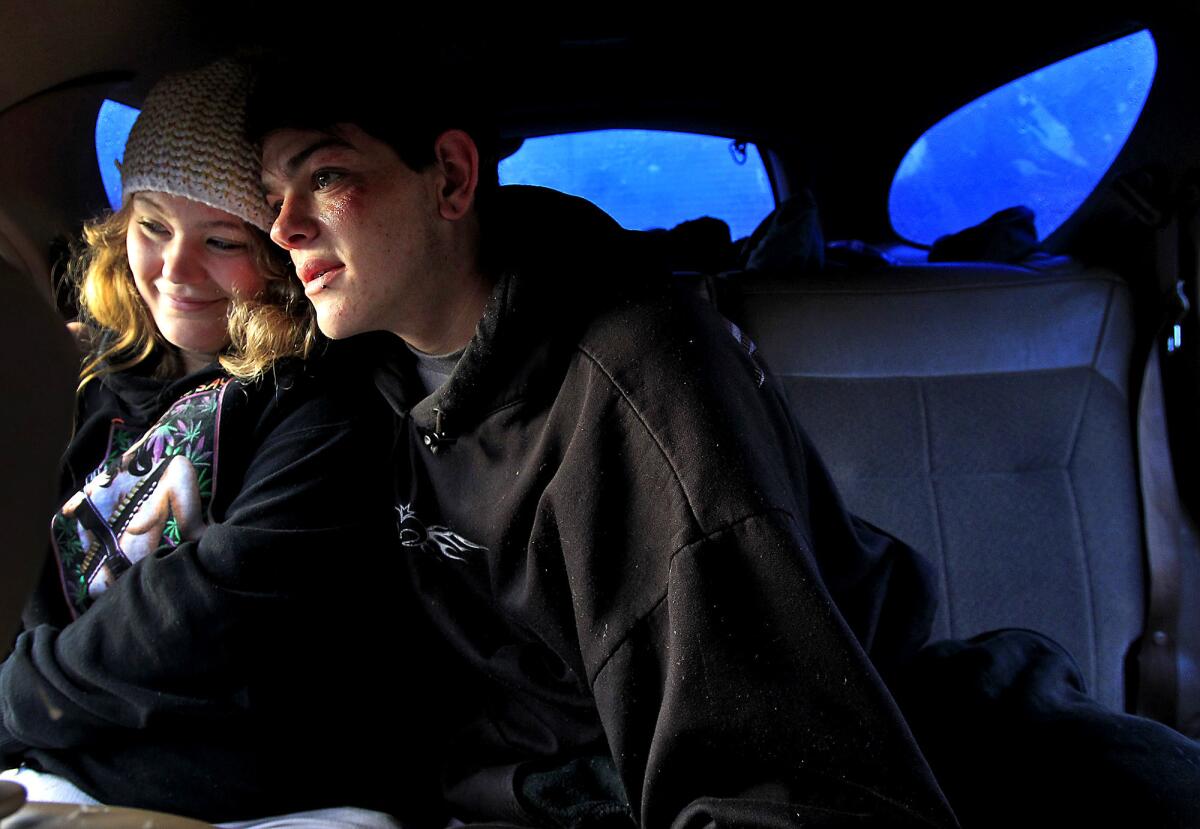Unless homeless people in cars and RVs have places to park, they’ll end up sleeping on sidewalks

- Share via
The city of Los Angeles is constantly wrestling with how to balance the rights of desperate homeless people living outdoors with the rights of the rest of its residents. One area of conflict has been what to do about homeless people who live in their cars or RVs, which many Angelenos say take up too much space and dump too much trash in residential neighborhoods.
In February 2017, the city instituted a new ordinance that banned people from sleeping in their vehicles in residential neighborhoods from 9 p.m. to 6 a.m. — and at all times within 500 feet of a park, school, or daycare center. That meant the majority of streets in the city were off-limits.
But while the law banned car-dwelling in a lot of places, it affirmatively allowed it in commercial and industrial areas. (There were even some maps handed out by the L.A. Police Department showing where people could park at night.) Additionally, City Council members said that parking lots across the city would be designated “safe parking” areas where homeless people could safely park, use a bathroom and work with outreach workers to get social services.
The 2017 ordinance was renewed last week.
If city officials want to bar homeless people from sleeping in their vehicles in residential neighborhoods and near schools and parks, that’s their prerogative. But the law will work — and will be humane — only if the city holds up its end of the compromise and provides alternative parking. And that’s not happening.
Safe parking lots — generally run by nonprofit organizations — take time to locate and money to set up. There are about 180 safe parking spaces available in various lots throughout the city, and that number is predicted to grow to 450 in the next year. But consider this: According to the official homeless count, there were more than 9,500 people living in about 5,700 vehicles of all kinds in the city of Los Angeles in 2019. A mere 450 spaces won’t solve the problem.
True, there are still industrial and commercial areas where people can legally park and sleep. But since the ordinance first took effect two and a half years ago, overnight parking bans have been instituted on hundreds of blocks throughout the city, a significant number of them in those neighborhoods.
These parking bans are granted by the City Council at the request of individual council members to placate upset property owners. Some of their complaints are legitimate: Heavy commercial trucks parking on streets rather than in lots; oversized vehicles on narrow streets where drivers’ sight lines could be blocked. But most are just designed to keep homeless people away.
How does that solve anything? You can’t institute an ordinance that narrowly restricts where homeless people can sleep in their cars and then whittle away at the only places they’re allowed to sleep legally. That just leaves homeless people with nowhere to go; they’ll be rousted from street to street with no options.
There are already so many more homeless people than there are available shelter beds that the city has agreed to allow people to sleep on sidewalks at night in the city. If the City Council can’t find more spots for homeless people to park, they will have little choice but to get out of their cars and sleep legally on the sidewalks. Will residents prefer that?
Dealing with homelessness has to involve give and take. The city’s effort to restrict people from sleeping in their cars in residential neighborhoods is unworkable if it does not offer them alternative places to park. The city has to make that happen.
More to Read
A cure for the common opinion
Get thought-provoking perspectives with our weekly newsletter.
You may occasionally receive promotional content from the Los Angeles Times.









